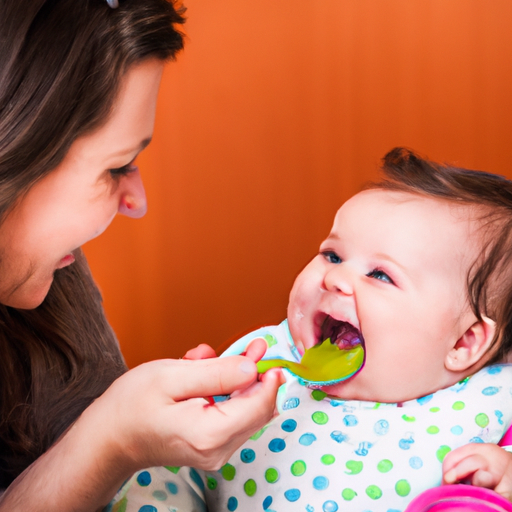When Should I Introduce Solid Food to My Breastfed Baby?
Introducing solid food to your breastfed baby is an exciting milestone in their development. It’s important to know when the right time is to start this new adventure. In this article, we will discuss the recommended age and signs that indicate your baby is ready for solid foods.
Recommended Age
The American Academy of Pediatrics (AAP) suggests that parents should wait until their baby is around six months old before introducing solid food. This is because breast milk or formula provides all the necessary nutrients for your baby’s growth and development during the first six months of life. Waiting until six months also reduces the risk of food allergies and other digestive issues.
Signs of Readiness
While age is a general guideline, it’s essential to look for signs of readiness in your baby before introducing solid food. Here are some signs that indicate your baby is ready to start:
1. Head Control: Your baby should be able to hold their head steady and sit upright with minimal support. This is crucial to ensure safe swallowing and prevent choking.
2. Tongue Reflex: The tongue-thrust reflex, where babies push food out of their mouths with their tongues, typically disappears around six months. If your baby still exhibits this reflex, it may be a sign that they are not ready for solid foods.
3. Increased Appetite: If your baby seems unsatisfied with breast milk or formula alone and is showing interest in what you’re eating, it may be a sign that they are ready for solid foods. Keep in mind that this alone is not enough evidence and should be accompanied by other signs of readiness.
4. Ability to Chew: Your baby should be able to move food from the front of their mouth to the back and swallow it. This indicates that they have developed the necessary oral motor skills for eating solid foods.
Introducing Solid Foods
Once you’ve determined that your baby is ready for solid foods, it’s time to start the introduction process. Here are some tips to make the transition smoother:
1. Start with Single-Ingredient Foods: Begin with simple, single-ingredient purees such as mashed bananas, avocados, or sweet potatoes. This allows you to identify any potential allergies or digestive issues.
2. Offer Small Amounts: Begin by offering a teaspoon or two of solid food once a day. Gradually increase the amount and frequency as your baby gets used to the new textures and flavors.
3. Watch for Allergic Reactions: Keep an eye out for any signs of allergic reactions such as rashes, diarrhea, or vomiting. If you notice any of these symptoms, stop feeding the particular food and consult your pediatrician.
4. Be Patient: Remember that introducing solid foods is a learning process for your baby. They may take some time to adjust to the new experience, so be patient and offer a variety of foods to expand their palate.
In conclusion, it is generally recommended to introduce solid foods to your breastfed baby around six months of age. However, it’s crucial to look for signs of readiness in your baby, such as head control, tongue reflex disappearance, increased appetite, and ability to chew. When starting solid foods, begin with single-ingredient purees, offer small amounts, watch for allergic reactions, and be patient with the process. Always consult with your pediatrician if you have any concerns or questions about your baby’s readiness for solid foods.




